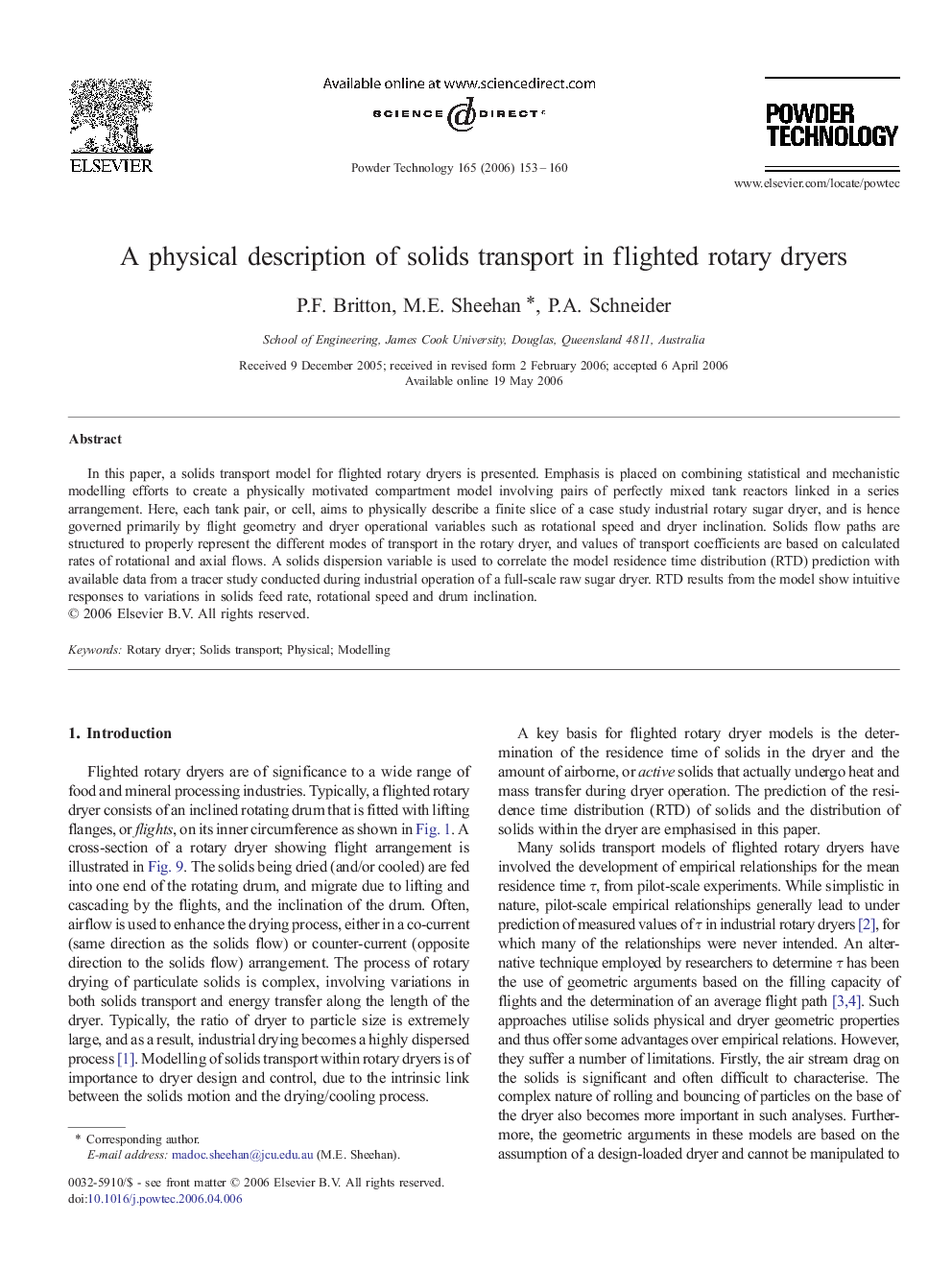| Article ID | Journal | Published Year | Pages | File Type |
|---|---|---|---|---|
| 239394 | Powder Technology | 2006 | 8 Pages |
In this paper, a solids transport model for flighted rotary dryers is presented. Emphasis is placed on combining statistical and mechanistic modelling efforts to create a physically motivated compartment model involving pairs of perfectly mixed tank reactors linked in a series arrangement. Here, each tank pair, or cell, aims to physically describe a finite slice of a case study industrial rotary sugar dryer, and is hence governed primarily by flight geometry and dryer operational variables such as rotational speed and dryer inclination. Solids flow paths are structured to properly represent the different modes of transport in the rotary dryer, and values of transport coefficients are based on calculated rates of rotational and axial flows. A solids dispersion variable is used to correlate the model residence time distribution (RTD) prediction with available data from a tracer study conducted during industrial operation of a full-scale raw sugar dryer. RTD results from the model show intuitive responses to variations in solids feed rate, rotational speed and drum inclination.
